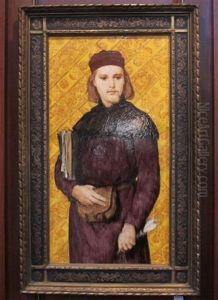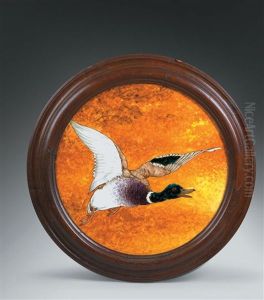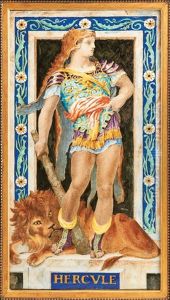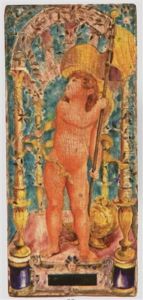Theodore Deck Paintings
Joseph-Théodore Deck was a renowned French ceramicist and a pivotal figure in 19th-century European pottery. Born in Guebwiller, Alsace, in 1823, Deck began his illustrious career in the world of ceramics at an early age. Initially, he worked in Strasbourg and Paris, where he honed his skills and deepened his knowledge of ceramic art. In 1856, he founded his own ceramic workshop in Paris, marking the beginning of a remarkable journey that would influence the trajectory of ceramic art in France and beyond.
Deck's work was distinguished by its innovative techniques, vibrant colors, and the integration of styles from various cultures, including Islamic, Chinese, and Japanese art. He was particularly celebrated for his development of the 'bleu de Deck,' a distinctive turquoise glaze that became a hallmark of his work and a highly sought-after color in ceramic art. Deck's fascination with Islamic ceramics led him to experiment with and eventually master the production of Iznik pottery, which was characterized by its intricate designs and bright, rich colors.
Throughout his career, Deck was an avid experimenter, constantly pushing the boundaries of ceramic art. He was among the first in Europe to incorporate underglaze painting techniques, which allowed for more detailed and colorful designs. His contributions to the field were not limited to his artistic creations; Deck was also a respected author and educator, sharing his knowledge and passion for ceramics through numerous publications and lectures.
Deck's influence extended beyond the artistry of his ceramics. He played a crucial role in the revival of interest in ceramic art during the late 19th century, inspiring a generation of artists and craftsmen. His works were exhibited widely, earning him international acclaim and numerous awards, including medals at the Paris Expositions Universelles.
Joseph-Théodore Deck passed away in 1891, leaving behind a legacy that has continued to inspire and influence the world of ceramic art. His innovative techniques, commitment to cross-cultural artistic exchange, and the beauty of his creations have cemented his status as a major figure in the history of ceramics.










